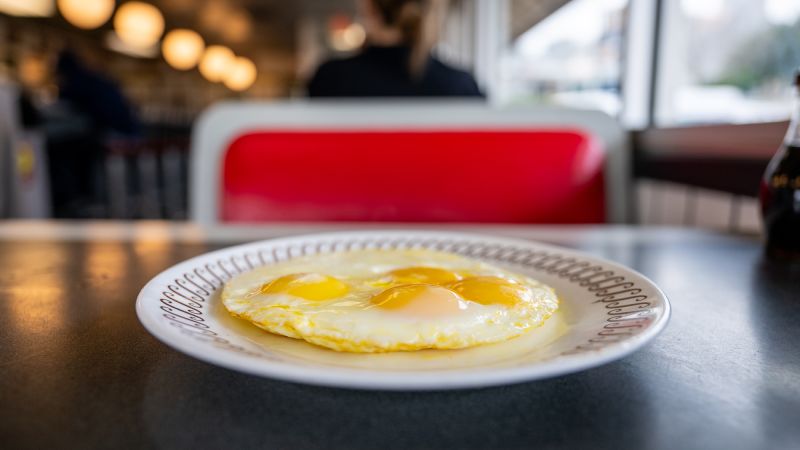Waffle House, the beloved diner chain known for its all-day breakfast menu, recently announced an end to its egg surcharge, much to the delight of its customers. This significant update, made public through the company’s social media presence, signals a positive shift in the ever-fluctuating landscape of food pricing, particularly for one of its most popular items: eggs. With a menu that serves countless eggs annually—specifically around 272 million, notably outpacing other staples like hash browns and waffles—the removal of this surcharge holds substantial value for both the brand and its diners.
The origin of the surcharge stems from a severe outbreak of bird flu that drastically increased egg prices earlier this year. In February, as the egg shortage took hold, Waffle House introduced a 50-cent surcharge to every egg dish as a measure to help offset the heightened costs. This price adjustment not only impacted Waffle House’s bottom line but also served as a microcosm of the broader challenges the food industry faced during this period. The chain, which operates over 2,000 locations primarily in the Southeastern United States, has also become a sort of barometer for natural disasters and food price fluctuations, showcasing how intertwined these elements are with consumers’ daily lives.
As winter turned to spring, the situation began to change. By April, egg prices started to decline significantly, with reports indicating a drop of 12.7%. The USDA further revealed that a dozen large white-shell eggs could now be purchased for less than $3. This shift has brought much-needed relief not only to consumers but also to restaurant chains that had been grappling with the ramifications of inflated food costs. As a part of this recovery, Waffle House made the decision to eliminate the surcharge, ushering in a welcome development for patrons who frequent their establishments for delicious breakfast offerings at any hour.
The U.S. Agriculture Secretary, Brooke Rollins, shared insights into the broader context surrounding the egg price crisis, indicating that effective strategies had been implemented to improve biosecurity on farms while simultaneously easing grocery shelves’ egg prices. In a public statement, Rollins expressed optimism regarding the advancements made in the poultry industry, emphasizing the positive financial implications for families across the nation. Despite the continuous stresses of inflation, these adjustments have started to provide the necessary relief that consumers have been craving.
However, while prices have decreased, it is important to note that the Bureau of Labor Statistics (BLS) indicated that egg prices still remained higher than the same time last year. Nevertheless, the downward trend was substantial enough for chains like Waffle House to feel confident in discontinuing their surcharges. Patrons can now indulge in their favorite egg dishes without the added financial burden, reinstating the value proposition that Waffle House aims to deliver consistently.
In a light-hearted announcement, Waffle House acknowledged the removal of the surcharge through a post on social media, proclaiming the change with enthusiasm: “Egg-cellent news…as of June 2, the egg surcharge is officially off the menu. Thanks for understanding!” Such communication from the brand fosters a positive connection with its customer base, reinforcing the relationship that diners have come to cherish over the years.
Lastly, it is worth mentioning that this article was brought to you by the collaborative efforts of CNN’s Jordan Valinsky and David Goldman, whose reporting sheds light on the evolving dynamics of food pricing. As Waffle House continues to navigate these changes, it remains a cherished staple in the American culinary landscape, inviting a diverse array of patrons into its welcoming booths at any hour of the day or night.










